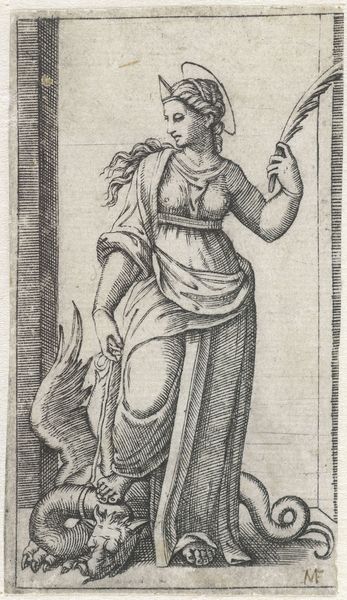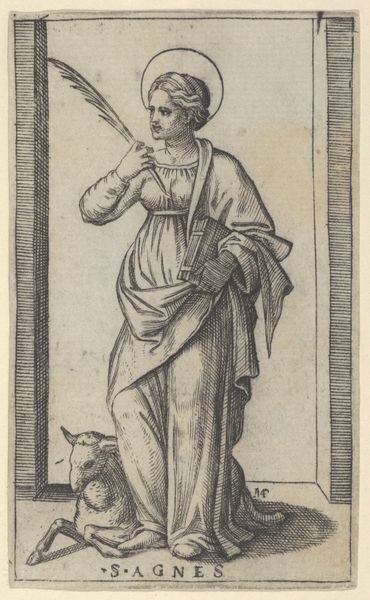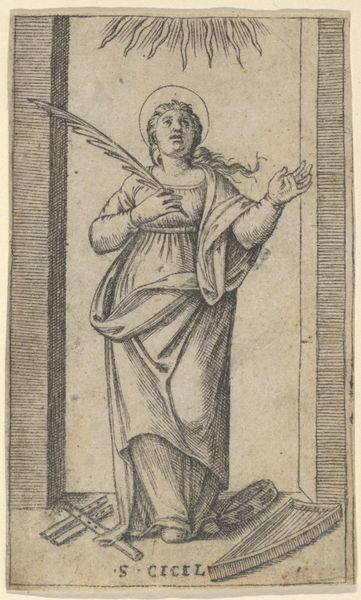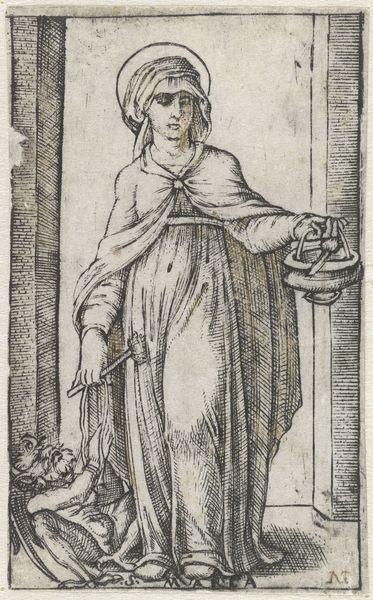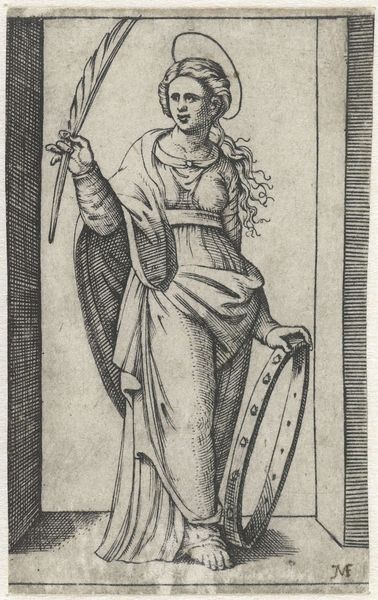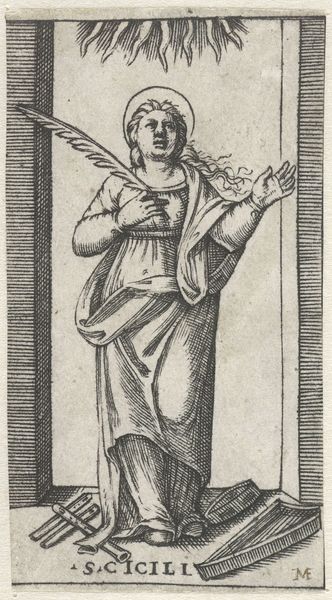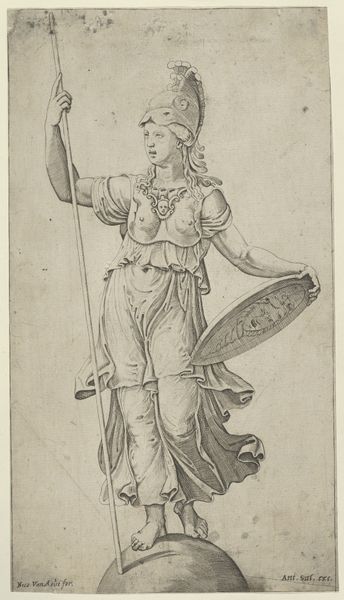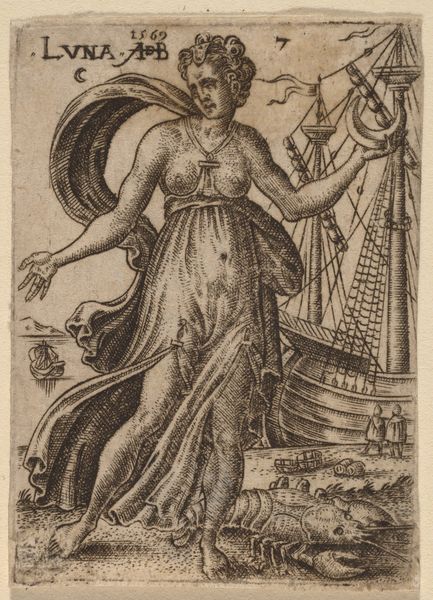
Saint Margaret standing, a dragon at the left, from "Piccoli Santi" (Small Saints) 1495 - 1532
0:00
0:00
drawing, print, engraving
#
drawing
# print
#
figuration
#
history-painting
#
italian-renaissance
#
engraving
Dimensions: 3 1/4 x 2 in. (8.3 x 5.1 cm)
Copyright: Public Domain
Curator: This engraving by Marcantonio Raimondi, dating from between 1495 and 1532, depicts Saint Margaret standing triumphantly over a dragon. It's part of his "Piccoli Santi" or "Small Saints" series, now housed at the Metropolitan Museum. What strikes you about this image? Editor: The sheer contrast, initially. The stark lines of the engraving create such depth. The delicate rendering of Saint Margaret compared to the rather grotesque dragon makes for a visually captivating dynamic. The dragon feels almost comical! Curator: It’s interesting you say comical. Consider the prevailing views of women at the time. Margaret’s ability to overcome such a fearsome beast would have carried a powerful message about female strength, especially when viewed through a religious lens in Italian Renaissance society. Engravings like this played a role in shaping those views by making them more accessible. Editor: I see your point, yet her figure remains the focal point thanks to the contrast, her smooth robes a masterclass in cross-hatching to communicate fabric. Observe the dragon – almost a caricature in its depiction! How does the use of such overt symbolism impact its social influence, do you think? Curator: By using established Christian symbols, such as Saint Margaret trampling the dragon representing evil and heresy, the image would immediately resonate with its intended audience. It's a potent visual sermon easily circulated amongst a population where literacy was limited, thereby embedding religious and social norms more broadly. The medium is indeed the message! Editor: Precisely. The precision in the engravings offers such fine detail that reinforces the subject matter but transcends its context to also establish lasting aesthetics. To observe the minute halo is to admire the craft itself. The balance here—visually and thematically—creates a memorable piece of considerable value for artistic study. Curator: Indeed, looking beyond our interpretations, it provides a fascinating look into not only 16th century devotion, but how the Renaissance was changing the role and recognition of art. Editor: A blend of skillful aesthetics and complex social-religious interplay. Interesting indeed.
Comments
No comments
Be the first to comment and join the conversation on the ultimate creative platform.
